On guard in Gaza
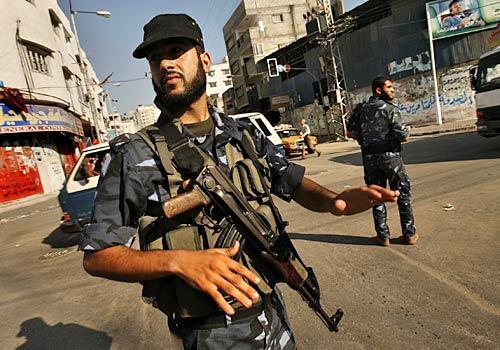
Members of Hamas’ Executive Force man an intersection in Gaza City, keeping the traffic moving. The security force, in blue camouflage uniforms, took up positions across the city, bringing a sense of normalcy after the savage fighting between Hamas and Fatah fighters. (Carolyn Cole / LAT)
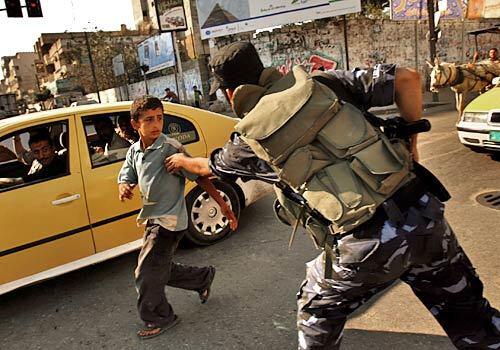
An Executive Force member pulls a child out of an intersection, taking him to the sidewalk. The makeshift checkpoints Hamas and Fatah had set up during their battles have been taken down and streets are again clogged with traffic. Shops also have reopened, though money is still scarce and there are fears of shortages of food and other goods as borders remain closed. (Carolyn Cole / LAT)
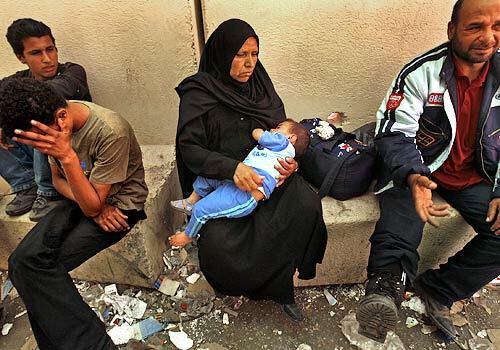
Khadra Salem, center, with her 18-month-old son Mohammed, is trying to leave Gaza to join her husband in the West Bank. Many others, especially those who were loyal to Fatah and fear retaliation, are trying to leave the cramped coastal territory, which residents often call a big prison. (Carolyn Cole / LAT)
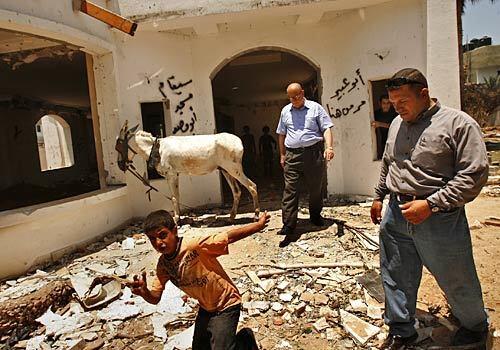
Hamas fighters and looters took sledgehammers to the the Gaza City home of Fatah strongman Mohammed Dahlan, who was the strips top security official until Hamas routed his faction. Only the shell remains of his villa, which was seen by many as a symbol of Fatahs corrupt rule. Hamas plans to build a mosque there in honor of a member the group says was slain by Dahlans security forces. (Carolyn Cole / LAT)
Advertisement
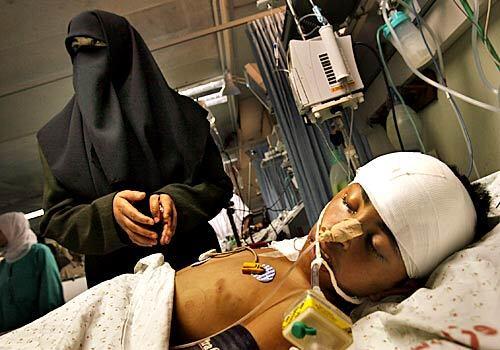
Fadel el Looh, 14, lies in a coma at Shifa Hospital in Gaza City; his mother stands by during a brief visit. Fadel and two other children at the hospital are in comas after suffering gunshot wounds to the head during the recent fighting. Many Gazans still feel shocked by the severity of the fighting, which left nearly 150 people dead, including 36 civilians, according to a Palestinian rights group in Gaza City. (Carolyn Cole / LAT)
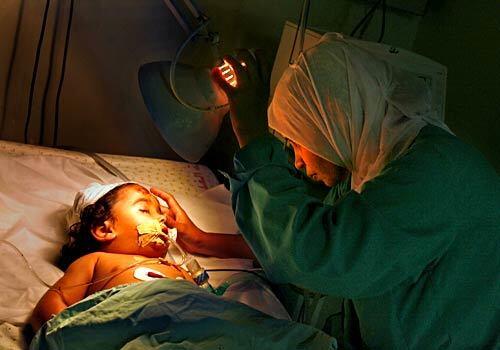
A nurse examines 2-year-old Shahed Megdad, one of the three children in comas at Shifa Hospital. She was shot 10 days ago, the bullet exiting her left eye, and remains in critical condition. Hospital administrators say they have adequate supplies for now but fear what will happen if Gazas borders remain closed. (Carolyn Cole / LAT)
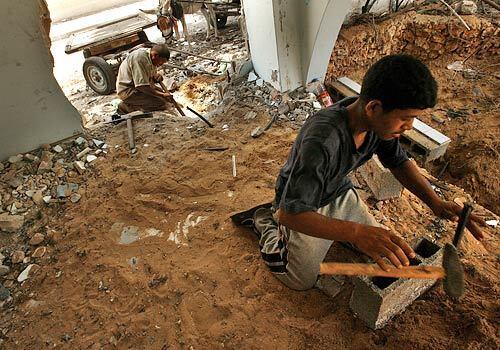
Looters see what they can salvage from the rubble of Mohammed Dahlans home in Gaza City. The Fatah strongman formed the Preventive Security Forces, accused by Hamas of torturing its members in brutal crackdowns. This conflict was not between Palestinians and Palestinians. It was between those who are right and those who are wrong, declared one Hamas militiaman. (Carolyn Cole / LAT)
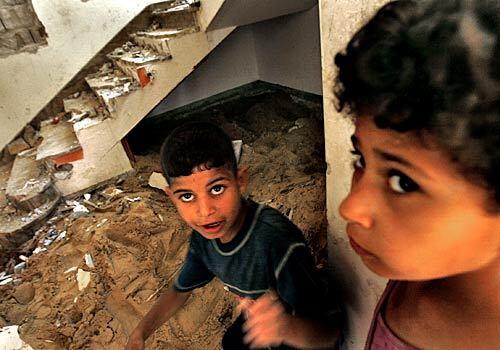
Children play in the remains of Mohammed Dahlans home in Gaza City. The Fatah strongman was widely disliked, and Hamas officials had called him a thug, saying he was serving as a proxy for Israeli and U.S. efforts to oust the Islamist group, which won parliamentary elections in January 2006, from power. (Carolyn Cole / LAT)
Advertisement
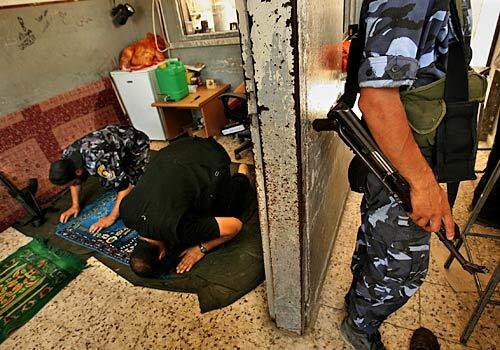
Hamas security men at the Saraya compound, formerly the headquarters of Fatahs national security agency, take a prayer break. Hamas supporters talked of the liberation of Gaza from Fatah leaders who they said were corrupt and aligned with Israel and the United States. But there was widespread unease among Gazans about the situation, with many fearing increasing isolation and possibly more violence. (Carolyn Cole / LAT)
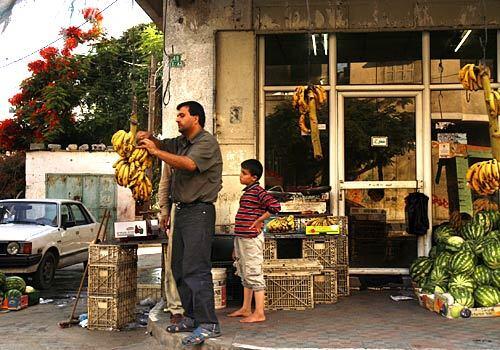
A grocer sells fruit in Gaza. With the borders closed it has been difficult to obtain fresh produce, although Israel this week did allow the transfer of more than 840 tons of flour, meat and other foodstuffs, 24,000 gallons of milk and 6,600 gallons of cooking oil. (Carolyn Cole / LAT)
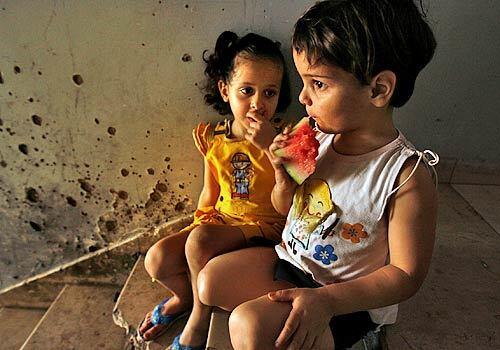
Rawan el Efrange, 5, left, eats watermelon with her friend Lama el Horani, 4, on the steps of the bullet-riddled Nour apartment building. Fatah gunmen had taken over the top floors while fighting Hamas, and the buildings 200 residents, including Rawan and her family, hid in the basement for hours. I cried for one hour, Rawan said. Only a few families have returned. (Carolyn Cole / LAT)







